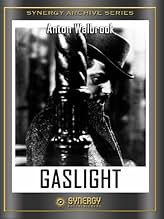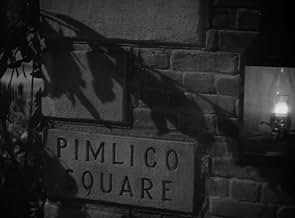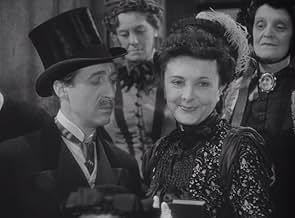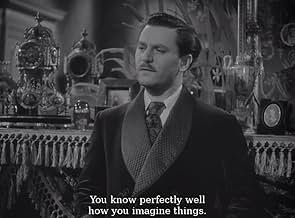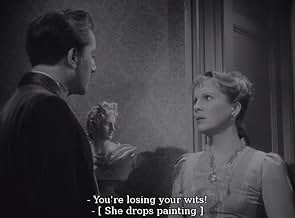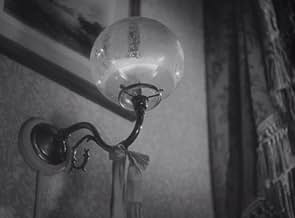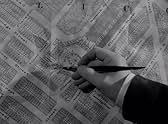IMDb-BEWERTUNG
7,3/10
5711
IHRE BEWERTUNG
Füge eine Handlung in deiner Sprache hinzuTwenty years after the murder of Alice Barlow, her house is finally occupied again. However, the husband from the couple who has moved in has a secret that he will do anything to keep hidden... Alles lesenTwenty years after the murder of Alice Barlow, her house is finally occupied again. However, the husband from the couple who has moved in has a secret that he will do anything to keep hidden.Twenty years after the murder of Alice Barlow, her house is finally occupied again. However, the husband from the couple who has moved in has a secret that he will do anything to keep hidden.
- Regie
- Drehbuch
- Hauptbesetzung
Alfred Atkins
- Bit Role
- (Nicht genannt)
Edwin Ellis
- Bit Role
- (Nicht genannt)
Kathleen Harrison
- Bit Role
- (Nicht genannt)
Katie Johnson
- Alice Barlow's Maid
- (Nicht genannt)
Molly Raynor
- Bit Role
- (Nicht genannt)
Empfohlene Bewertungen
10preppy-3
It's easy to see why MGM locked this away in their vaults when they issued their 1944 remake--it's really great!
An evil crook (Anton Walbrook) slowly tries to drive his wife (Diana Wynyard) mad for some jewels.
This isn't as lush as the remake, but it more than makes up for it in other departments. For one thing--it's shorter by about 30 minutes and there's no romantic interlude at the beginning. This one starts dark and gets darker. Walbrook is frightening as the husband--much better than Charles Boyer in the remake. The scenes where he yells at his wife had me jumping. Wynyard is great as his fragile wife. She doesn't go into hysterics and chew the scenery like Ingrid Bergman did--she plays it calmly and quietly and very very realistically. Her final confrontation with her husband was just great. Also Cathleen Cordell is lots of fun as Nancy, the parlor maid. In the remake she was played by Angela Landsbury (in her film debut). Surprisingly, Cordell is better than Landsbury!
The remake copied this film virtually scene by scene--and suffers somewhat by comparison. It added on the unnecessary romantic subplot with Joseph Cotton. Thankfully, there's nothing like that here. This just grips you from the very beginning and doesn't let go.
Both movies are great but this one is marginally better. Very recommended.
An evil crook (Anton Walbrook) slowly tries to drive his wife (Diana Wynyard) mad for some jewels.
This isn't as lush as the remake, but it more than makes up for it in other departments. For one thing--it's shorter by about 30 minutes and there's no romantic interlude at the beginning. This one starts dark and gets darker. Walbrook is frightening as the husband--much better than Charles Boyer in the remake. The scenes where he yells at his wife had me jumping. Wynyard is great as his fragile wife. She doesn't go into hysterics and chew the scenery like Ingrid Bergman did--she plays it calmly and quietly and very very realistically. Her final confrontation with her husband was just great. Also Cathleen Cordell is lots of fun as Nancy, the parlor maid. In the remake she was played by Angela Landsbury (in her film debut). Surprisingly, Cordell is better than Landsbury!
The remake copied this film virtually scene by scene--and suffers somewhat by comparison. It added on the unnecessary romantic subplot with Joseph Cotton. Thankfully, there's nothing like that here. This just grips you from the very beginning and doesn't let go.
Both movies are great but this one is marginally better. Very recommended.
Although Ingrid Bergman and Charles Boyer got a lot of press for the movie GASLIGHT, the film was actually a remake of a British film made only a few years earlier. It seems that the big-wigs at the studio wanted to remake the film but pretend that it was an original Hollywood production so they bought up the prints and the remade film went on to be considered a "classic". However, recently the ORIGINAL version from 1940 has been discovered and has been shown on Turner Classic Movies.
Having seen both versions, I found them awfully similar--but I would have to say that I preferred the original. The wonderful Anton Walbrook was a wonderful and even more menacing husband and I just could see no reason why the movie should have been remade. It's really a shame, too, as I am sure that those associated with the original must have wished they'd gotten all the attention the 1944 version received.
My advice is see them both. However, if you only plan on seeing one, see this one--it's just a better film!
Having seen both versions, I found them awfully similar--but I would have to say that I preferred the original. The wonderful Anton Walbrook was a wonderful and even more menacing husband and I just could see no reason why the movie should have been remade. It's really a shame, too, as I am sure that those associated with the original must have wished they'd gotten all the attention the 1944 version received.
My advice is see them both. However, if you only plan on seeing one, see this one--it's just a better film!
I have liked the Gaslight films for many years and was surprised and delighted recently to find both versions together on an American DVD ! Miracles will never cease, I thought!
I have read various comments from people trying to compare these two films. I will not fall into this trap - I liked each film as much as the other..true, Walbrook looks more evil as a villain than Charles BOyer, and the 1940 version is perhaps a little more picturesque with the sets ( carriages, children etc ) but both films were very well done. The picture quality of the 1944 version is obviously better than that of 1940, and I had read somewhere that they had actually tried to get the print of the 1940 version destroyed as to have only the 1944 version available. What a horrible thought that someone could actually have wanted to do that !
So, they are both great suspense films and the black and white only serves to enhance the already seedy atmosphere ! Well worth several viewings !!!
I have read various comments from people trying to compare these two films. I will not fall into this trap - I liked each film as much as the other..true, Walbrook looks more evil as a villain than Charles BOyer, and the 1940 version is perhaps a little more picturesque with the sets ( carriages, children etc ) but both films were very well done. The picture quality of the 1944 version is obviously better than that of 1940, and I had read somewhere that they had actually tried to get the print of the 1940 version destroyed as to have only the 1944 version available. What a horrible thought that someone could actually have wanted to do that !
So, they are both great suspense films and the black and white only serves to enhance the already seedy atmosphere ! Well worth several viewings !!!
It is inevitable that this 1940 film and the 1944 "remake" with Charles Boyer and Ingrid Bergman are going to be compared, and people will have different opinions as to which is the better version.
To me, both 'Gaslight' films are great in their own way, and this reviewer ranks them equally, yet with one or two things in things that are done better in the other. Like the 1944 film (the only real drawback to that film was the uneven performance of Joseph Cotton), there is very little wrong here. The secondary characters could have been better fleshed out, and while Richard Adinsell's music score is suitably ominous Bonislau Kaper's score for the later version has more atmosphere, subtlety and tension.
However, while not as glossy as the later film 'Gaslight' (1940) regardless is incredibly well-made. It's shot beautifully and menacingly, is hauntingly lit and has sets that are picturesque yet give off a great amount of dread while over-stating it. It's intelligently and suspensefully directed by then-famous-and-well-regarded, now-almost-forgotten (undeservedly) Thorald Dickinson.
The script is thought-provoking and tense, everything feels relevant to what's going on and nothing seemed padded. Tighter-paced and more theatrical somewhat, the story never creaks and is leaden with tension and suspense with nothing obvious that came over as unnecessary or clumsy.
Performances are great here and hardly inferior to those in the later film, despite being less familiar. Anton Walbrook, while not as subtle as Charles Boyer, is terrifying and a huge part as to why the film is as atmospheric as it is. Diana Wynward demonstrates Bella's vulnerability incredibly movingly with no histrionics and she's hardly dull either (though the character has more range and depth to her in the 1944 version).
Frank Petingell looks more comfortable than Joseph Cotton, his performance is more even (though Cotton was hardly bad), the character is better written and he is more believable as a police officer (where Cotton's performance particularly fell down on). Robert Newton is a strong presence in an early role, and Cathleen Cordell is a hoot as Nancy.
All in all, despite being in the shadow of the 1944 'Gaslight' in popularity the earlier 1940 film doesn't deserve to be, because it is every bit as great. 9/10 Bethany Cox
To me, both 'Gaslight' films are great in their own way, and this reviewer ranks them equally, yet with one or two things in things that are done better in the other. Like the 1944 film (the only real drawback to that film was the uneven performance of Joseph Cotton), there is very little wrong here. The secondary characters could have been better fleshed out, and while Richard Adinsell's music score is suitably ominous Bonislau Kaper's score for the later version has more atmosphere, subtlety and tension.
However, while not as glossy as the later film 'Gaslight' (1940) regardless is incredibly well-made. It's shot beautifully and menacingly, is hauntingly lit and has sets that are picturesque yet give off a great amount of dread while over-stating it. It's intelligently and suspensefully directed by then-famous-and-well-regarded, now-almost-forgotten (undeservedly) Thorald Dickinson.
The script is thought-provoking and tense, everything feels relevant to what's going on and nothing seemed padded. Tighter-paced and more theatrical somewhat, the story never creaks and is leaden with tension and suspense with nothing obvious that came over as unnecessary or clumsy.
Performances are great here and hardly inferior to those in the later film, despite being less familiar. Anton Walbrook, while not as subtle as Charles Boyer, is terrifying and a huge part as to why the film is as atmospheric as it is. Diana Wynward demonstrates Bella's vulnerability incredibly movingly with no histrionics and she's hardly dull either (though the character has more range and depth to her in the 1944 version).
Frank Petingell looks more comfortable than Joseph Cotton, his performance is more even (though Cotton was hardly bad), the character is better written and he is more believable as a police officer (where Cotton's performance particularly fell down on). Robert Newton is a strong presence in an early role, and Cathleen Cordell is a hoot as Nancy.
All in all, despite being in the shadow of the 1944 'Gaslight' in popularity the earlier 1940 film doesn't deserve to be, because it is every bit as great. 9/10 Bethany Cox
The later version is Hollywood English, which I sometimes think is a downtown section of Hollywood Transylvanian. Believe me, the original is the real thing, from the small details up to the social assumptions: it's recognisably English. As such, the thriller is grounded in a reality that the later version can never have. And so it's scary! Of course, I admit that this justification of the original might be a lot less convincing if you're reading my words on the other side of the world...
As for the difficulty of getting hold of a copy, well every few years it's shown on one TV station or another over here, so there has to be a good copy somewhere out there.
As for the difficulty of getting hold of a copy, well every few years it's shown on one TV station or another over here, so there has to be a good copy somewhere out there.
Wusstest du schon
- WissenswertesWhen MGM remade the film with Charles Boyer and Ingrid Bergman, the studio attempted to have all prints of this earlier version destroyed. Fortunately, several prints escaped the fire (in fact, it is believed that director Thorold Dickinson surreptitiously struck a print himself before the negative was lost).
- PatzerAfter the murder of the old lady in 1865, a police constable is shown blowing a whistle to summon assistance. Whistles were not used by the Metropolitan Police until the 1870s; prior to that they used a football rattle to attract attention.
- VerbindungenFeatured in The Kenny Report: Folge vom 3. September 2024 (2024)
- SoundtracksThe Can-Can
(uncredited)
from "Orpheus in the Underworld"
Music by Jacques Offenbach
Arranged by Richard Addinsell
Played at the music hall and danced to by The Darmora Ballet
Top-Auswahl
Melde dich zum Bewerten an und greife auf die Watchlist für personalisierte Empfehlungen zu.
- How long is Angel Street?Powered by Alexa
Details
- Erscheinungsdatum
- Herkunftsland
- Sprache
- Auch bekannt als
- Angel Street
- Drehorte
- Produktionsfirma
- Weitere beteiligte Unternehmen bei IMDbPro anzeigen
- Laufzeit
- 1 Std. 24 Min.(84 min)
- Farbe
- Seitenverhältnis
- 1.37 : 1
Zu dieser Seite beitragen
Bearbeitung vorschlagen oder fehlenden Inhalt hinzufügen

